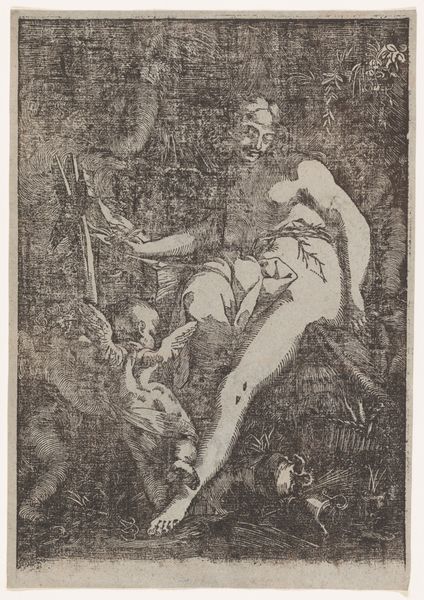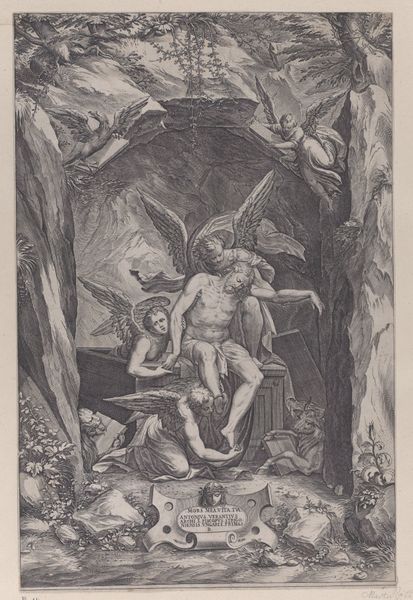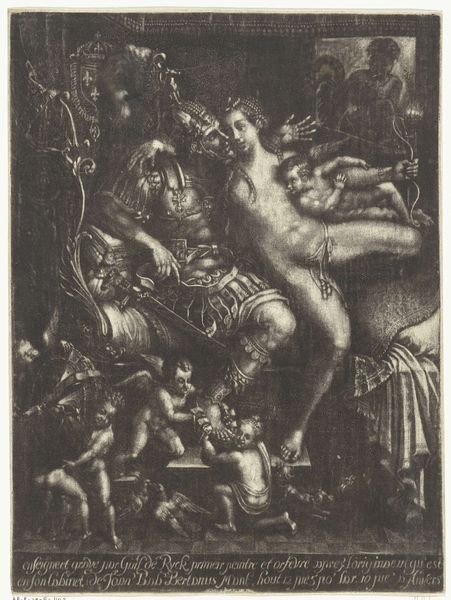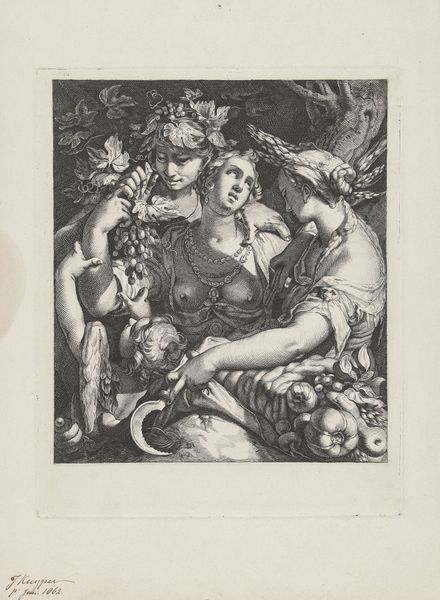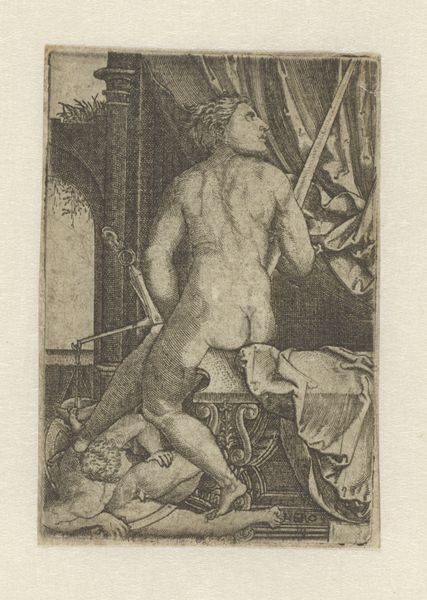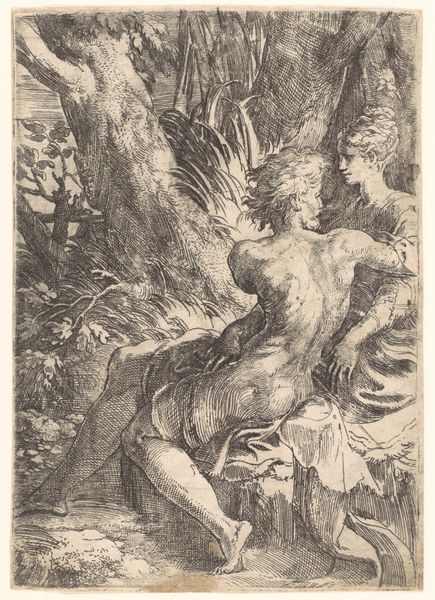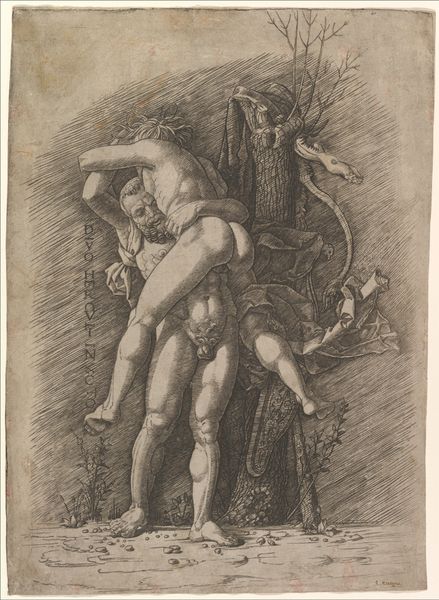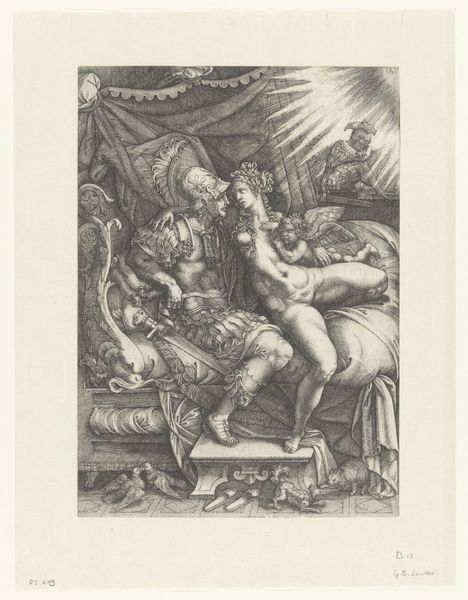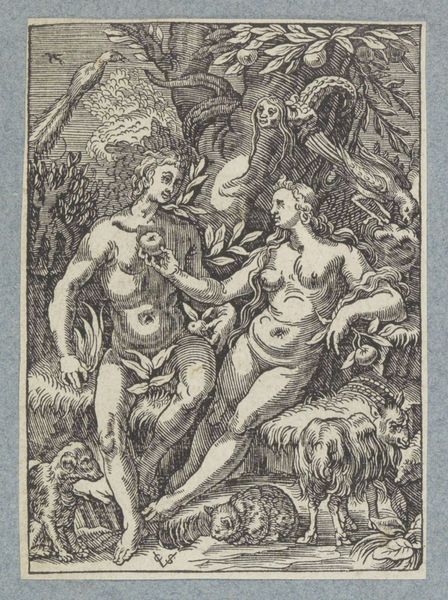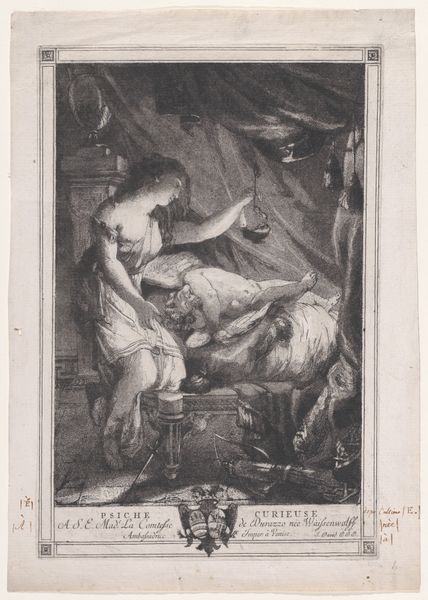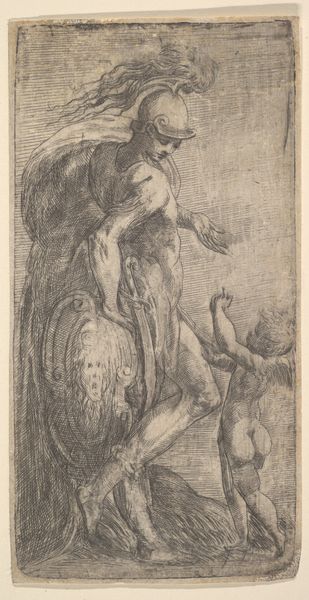
print, engraving
#
narrative-art
# print
#
figuration
#
history-painting
#
italian-renaissance
#
engraving
Dimensions: height 389 mm, width 255 mm
Copyright: Rijks Museum: Open Domain
Giuseppe Scolari made this print, "Maria Magdalena in de wildernis", using etching. The dense hatching and cross-hatching creates areas of dark shadow, contrasting with the lighter, more sparsely etched areas that define the figures. Etching is an indirect method, meaning the artist doesn't directly incise the plate with a tool. Instead, a waxy ground is applied, the image is scratched into the ground, and then acid is used to bite the exposed metal. This allows for a freedom of line not possible with the burin in engraving. Scolari's print, with its dynamic composition, owes its atmospheric quality to the etching process. The print medium made images widely accessible, impacting the dissemination of religious and mythological narratives in society, but it also took away the hand of the artist. By understanding the labor and ingenuity that went into its making, we gain a richer appreciation for the complex interplay between artistic skill, material, and cultural context.
Comments
No comments
Be the first to comment and join the conversation on the ultimate creative platform.
